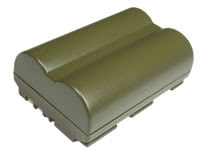The T1i /eos 500d Battery
Saturday, November 7, 2009

The T1i/canon eos 500d Battery
Your camera requires a battery to power its onboard computer, light meter, image
sensor, and other components. If you were following along in the previous
chapter, then you’ve already charged and used the battery, so we’re going to cover
some battery tips here:
• With a new battery, you should find that you can get about 500 shots off of a
single charge. As the battery ages, this number will go down, but the included
battery should be good for a couple of years of shooting before you need to
replace it.
• Note that, in general, you do not need to worry about completely draining the
battery before recharging it. You can “top it off” at any time without harming
the battery itself.
• However, for the first few charges, drain the battery completely and then give
it a full charge. After that, you can “top it off” anytime you like.
The T1i and bad weather
While the Rebel T1i can handle light rain, it’s not going to do so well in heavy
rain, or submersed in water. If you accidentally submerge your camera, take it
out of the water immediately and don’t turn it on. Remove the battery and media
card and let the camera sit for several days to dry out. To speed drying, place
the camera in a bowl and cover it with dry, uncooked rice. The rice will act as a
desiccant and can help speed drying.
After a few days, try powering up the camera. If it works—and the viewfinder isn’t
too dirty—then there’s no reason not to start shooting. If it doesn’t work, then
you’ll need to send the camera in to Canon. You can find instructions for getting
your T1i reparied at Canon’s website, www.canon.com. From the repair page, you
can easily set up a mail-in repair request. My experience with Canon’s service center
is that it’s very speedy, so you shouldn’t be without your camera for very long.
If you’re shooting in extreme heat or cold, be aware that the LCD screen on the
back of the camera may not work. Canon officially rates the operating temperature
of the T1i as 32 to 104°F (0 to 40°C). You can probably go a little beyond
these temperatures, but if you do, you will be risking a hardware failure. At extreme
temperatures, small parts and circuits expand and contract and can break.
If you’re shooting in very cold, damp weather, you must be careful when returning
indoors, because condensation inside the camera can cause the lens or
viewfinder to fog. When shooting in cold, take a Ziplock bag with you. Before
you return to a heated room, turn off the camera and place it in the bag. Zip up
the bag and leave it zipped until the camera has had time to warm up. Once the
temperature inside the bag has equalized with the temperature outside, you can
open the bag without fear of condensation.
• If you plan on an extended trip away from power, or if you tend to shoot a lot,
then you might want to invest in another battery. For less than $100, you can
get a second battery and charge it up before you leave. You can easily swap
out the battery as needed.
• You might also consider some alternate chargers, such as a charger that can
work off a car cigarette lighter or a small, inexpensive solar charger, which will
provide you with a way to charge your camera battery (as well as a cell phone
or iPod) any time you have access to sunlight.










[get this widget]
0 Comments:
Powered by Blogger Tutorials




